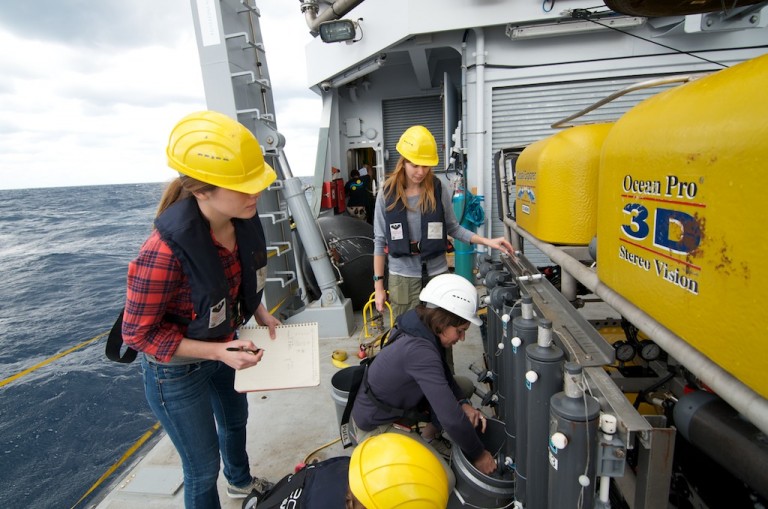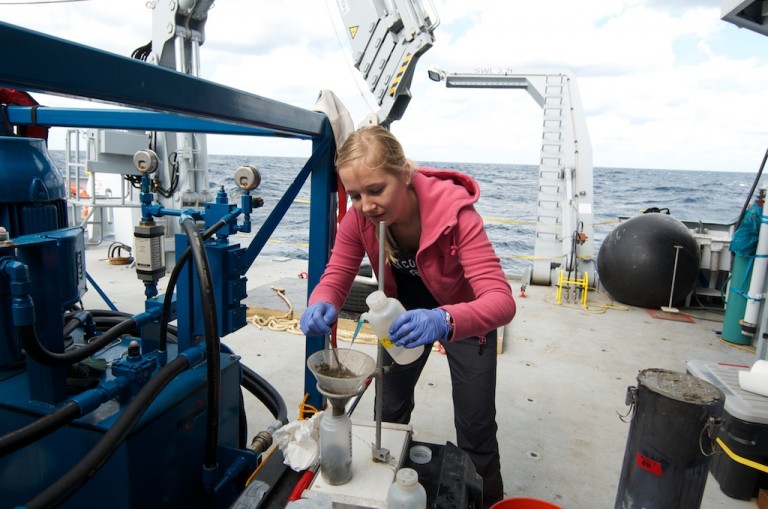R/V Falkor arrived at the target deep sea coral study site early this morning and the research team prepared for the ROV dive.
The video time-lapse camera (VTLC) system went back onto the ROV Global Explorer MK3 to be redeployed at this site. Researchers on the following leg of this cruise will return to this site to recover VTLC and return it to Dr. Ian MacDonald.

The ROV dove to a depth of 1,000 meters. Instead of broad sediment plains observed during the previous dives, the seafloor here had colorful rock outcroppings with assortments of deep-sea dwellers, including corals, brittle stars, crabs, and clams. ROV Global Explorer MK3 positioned VTLC near a field of clams that are commonly found in natural seep habitats. Although no active plumes could be detected as at the previous site, the finding of clams indicated that hydrocarbon seeps were present.
Following VTLC installation, the dive focused on collecting the sea fan Paramuricea to repeat the oil and dispersant exposure experiments on a different, deeper-dwelling species.

The dive went successfully and ROV Global Explorer MK3 collected plenty of samples for the research team. Tonight the ship will be transiting back to the site near the Macondo wellhead where the OC26 lander is still on the seafloor. It is fitting that the final operation for the “lander leg” of this cruise is to use ROV Global Explorer MK3 to recover the lander to R/V Falkor.
